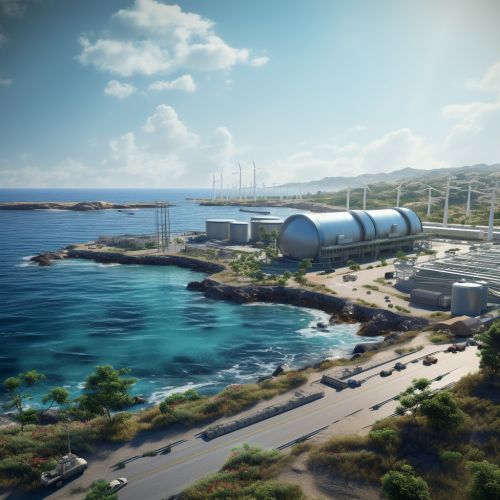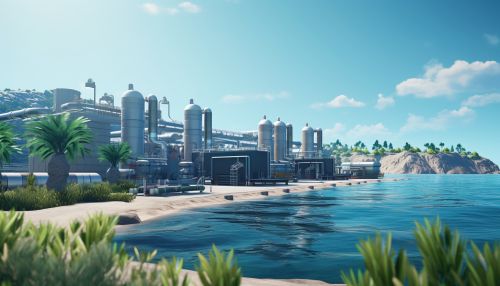Water Desalination and Purification
Introduction
Water desalination and purification are critical processes that provide potable water from saline or contaminated water sources. These techniques are essential in regions where fresh water is scarce, and the demand for water is high. The two main methods of desalination are thermal distillation and membrane processes, while purification typically involves filtration, chemical treatment, and disinfection.
Desalination
Desalination is the process of removing dissolved salts from water, making it suitable for drinking and irrigation. The need for desalination is growing as fresh water resources become increasingly scarce and polluted.
Thermal Distillation
Thermal distillation is one of the oldest methods of desalination. It involves heating saline water to create steam, which is then condensed to produce fresh water. This process effectively separates the salts and other impurities from the water.
Membrane Processes
Membrane processes are a more modern method of desalination. The two primary types are reverse osmosis and electrodialysis.
Reverse Osmosis
Reverse osmosis (RO) is a process where saline water is forced through a semi-permeable membrane under pressure. The membrane allows water molecules to pass through but blocks the salts and other impurities, resulting in desalinated water.
Electrodialysis
Electrodialysis (ED) is another membrane process that uses electrical potential to move salts through a membrane, leaving behind desalinated water. This method is particularly effective for brackish water desalination.
Purification
Water purification is the process of removing undesirable chemicals, biological contaminants, suspended solids, and gases from water. The goal is to produce water fit for specific purposes, most commonly for human consumption.
Filtration
Filtration is a physical process that removes particles from water by passing it through a porous material, or filter. The size of the pores in the filter determines what substances can pass through.
Chemical Treatment
Chemical treatment involves adding chemicals to water to remove contaminants. This includes processes like coagulation and flocculation, where chemicals are added to water to bind together contaminants into larger particles that can be more easily removed.
Disinfection
Disinfection is a crucial step in water purification that kills or deactivates pathogenic microorganisms in water. Common methods include chlorination, ultraviolet (UV) light, and ozonation.
Environmental Impact
While desalination and purification provide essential water resources, they also have environmental impacts. These include energy consumption, brine disposal, and potential harm to marine life.
Future Trends
Advancements in technology are continually improving the efficiency and reducing the environmental impact of water desalination and purification. These include energy recovery devices, renewable energy-powered desalination, and the development of more efficient membranes for reverse osmosis.
See Also


